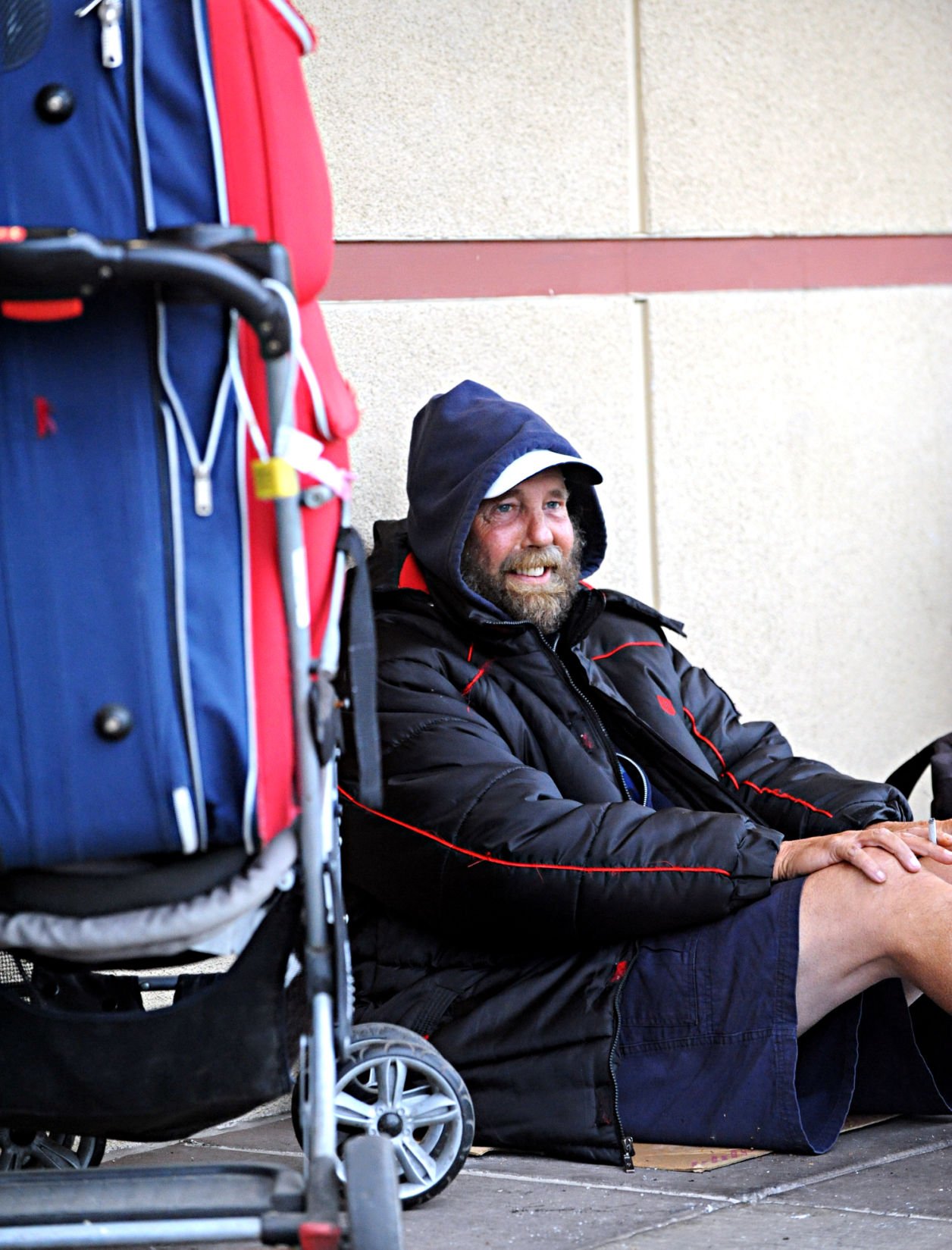
Instead of tapping on front doors, volunteers for a countywide census traversed alleyways, backstreets, parking lots and the woods of Gilroy Tuesday in search of those who try to be invisible—the homeless.
“It’s like finding the needle in a haystack when the needle is trying to hide,” said Jan Bernstein-Chargin, board chair of the Gilroy Compassion Center, who helped organize the census in Gilroy, Morgan Hill and San Martin.
Most of Gilroy’s homeless stay on the outskirts of town—often in a group of tents in a shaded, wooded area or inside a parked vehicle.
And the homeless of Gilroy learn to how to live out of sight if they want to stay, Bernstein-Chargin said. Some hide in plain sight with the use of false walls or camouflaged campgrounds, while others press into the city’s fringes to avoid detection.
In Gilroy alone last year, city crews removed 110 individual encampments and hauled off 38 tons of garbage, Gilroy Police Chief Denise Turner said. In 2013, police cleared 47 encampments.
Gilroy native David Saenz was one of the local guides Tuesday on hand to help the census groups cover ground. Halfway through the day he remembered to count himself, too.
Saenz has been homeless for two years. His nights are spent sharing camp with nine other souls or in the National Guard Armory—when there’s space. He hides his homeless from a daughter, a university freshman out-of-state.
“There are more homeless people in Gilroy than people realize,” said Saenz, who tries to conceal his encampment.
Volunteers counted 7,631 homeless people in Santa Clara County during the last survey, in 2013. But the census can’t find the well hidden or count those with jobs.
“You only get the visible homeless,” Bernstein-Chargin said, noting the U.S. Department of Housing and Urban Development sets rules on how counts are conducted.
“This methodology makes sense in a dense urban area where there aren’t a lot of hiding places (like New York City).”
“(The problem of homelessness) keeps going in a circle until people want to address it,” Mayor Don Gage added. “The chronically homeless will continue to do what’s kept them alive because they have no choice. People go where they think they can find shelter, and you can’t blame them.”
“The homeless people you don’t see are the ones who are working during the day, the ones like me,” Saenz added. “We all get tired of being treated like second-class citizens. It’s better not to be seen; that’s just the way we live our lives.”
This summer, the Armory in Sunnyvale—an emergency overnight shelter that provided beds for the needy—closed and San Jose officials disbanded the nation’s largest homeless encampment, known as “The Jungle.”
Local homeless say they’re noticing more people coming from out of town, increasing the drain on already limited resources.
“Every night, people get turned away from the Gilroy Armory because we only have so much room—125 spots,” observed Charles Weamer, a 53-year-old Army veteran who has been homeless for three decades. He alternates between camping and the Armory during winter months when it’s open.
“There are usually between 18 and 20 people turned away from the Armory (in Gilroy) nightly, especially on really cold nights,” he said.
Gilroy’s draw is that “it’s one of the nicer cities,” Weamer said, especially compared to cities like San Francisco and Phoenix.
“There’s hardly any violence and there are nice, generous people here,” he added.
Jeremy Leach, a 38-year-old Santa Cruz native, said he’s been staying in Gilroy off and on for three years and taps into local resources for food and clothing. He relies on the Armory for a place to sleep most nights, he said.
A legal solution?
As volunteers tabulate the results of the two-day, countywide census, slated for release in May, a proposal to build Gilroy’s first legal homeless encampment is gaining traction.
The Gilroy Compassion Center is asking county officials to relax the rules on staying in county parks campground to allow a select few homeless families to find temporary shelter in a camp—without fear the camp will be torn down or that the camp’s residents will be ticketed for sleeping in public.
The county parks department has 46,000 acres of open space, and project leader Joseph Davis says a little bit of land will go a long way towards building stability for the homeless.
“In all the county’s campgrounds combined, this could provide shelter for 2,000 homeless,” he said.
Between 10 and 20 acres of land, if ultimately approved by county officials, would be designated for a tent campground specifically for homeless families. The county has 250 campsites averaging roughly 400-square-feet; each would hold eight people. Additionally, between 60 and 70 acres of land would be set aside under the proposal for an RV campground where homeless could stay for up to six months, Davis said.
“The plus side is there are currently no mandatory building codes for RVs,” he added. “You just have to meet DMV regulations—lights for braking, backing up, turn signals, independent brakes and connections to a towing vehicle. The compassion Center would provide plumbing for water, electricity and sewer at each RV site.
The proposal is “one of the best ideas in the world,” said Chris Simmons, a Compassion Center client.
Saenz suggested the Compassion Center have an on-site manager who is present 24-hours a day, preferably someone who has been homeless and can serve as a natural leader, he said.
“Long-term solutions are decades away. We need provisions for people now.” Bernstein-Chargin said.
-7,631 county residents are homeless on any given night and 74 percent of those are out in the cold, living on the streets, in cars or in encampments, according to the 2013 Santa Clara County Homeless Census and Survey.
-Close to four out of every 1,000 Santa Clara County residents are homeless, recent estimates show. But since the last survey, in 2011, the number of homeless individuals in the county increased by 8 percent, with an 18 percent jump in San Jose.
-The 2013 “point in time count” found approximately 400 Gilroyans without shelter.














